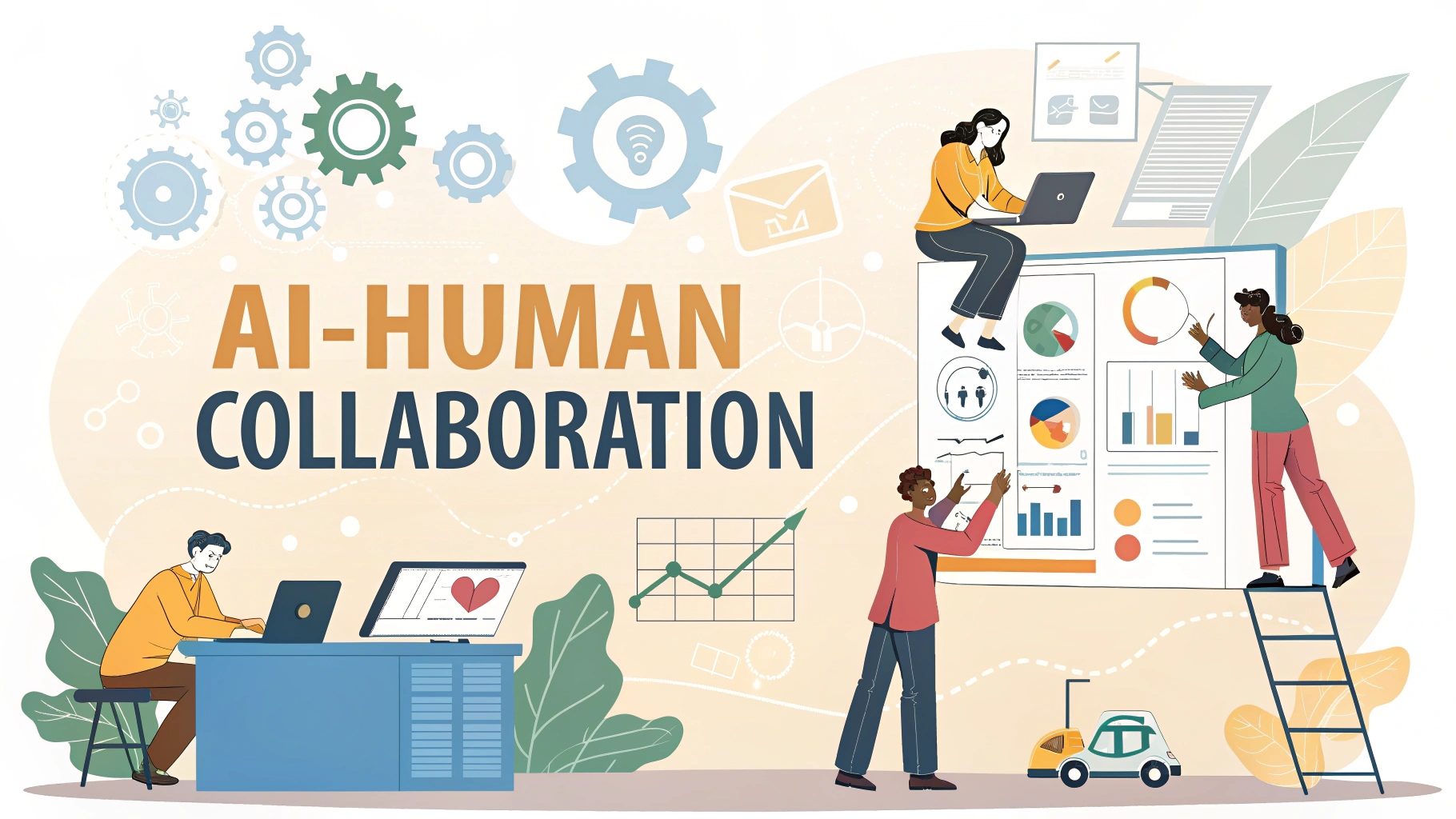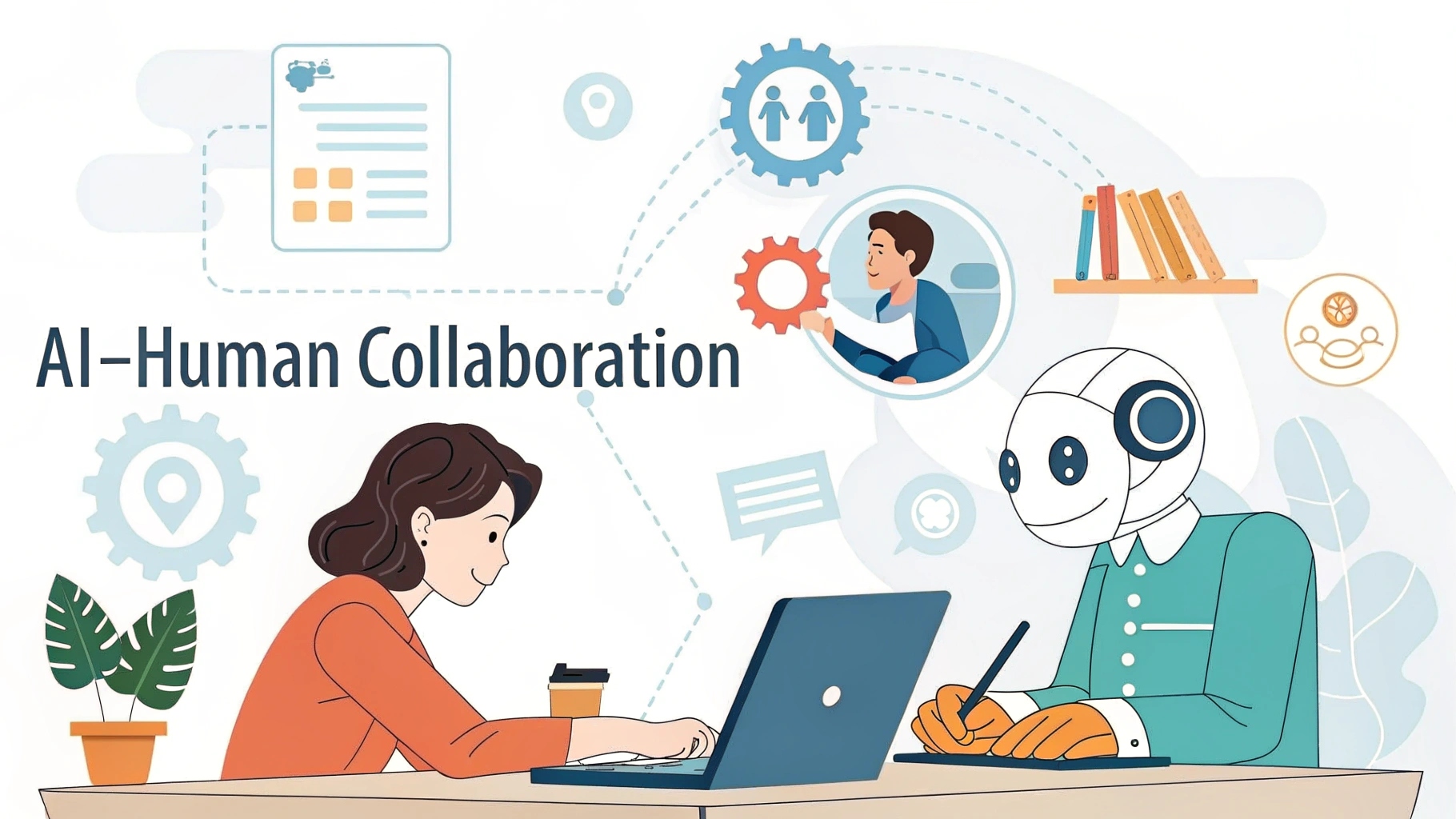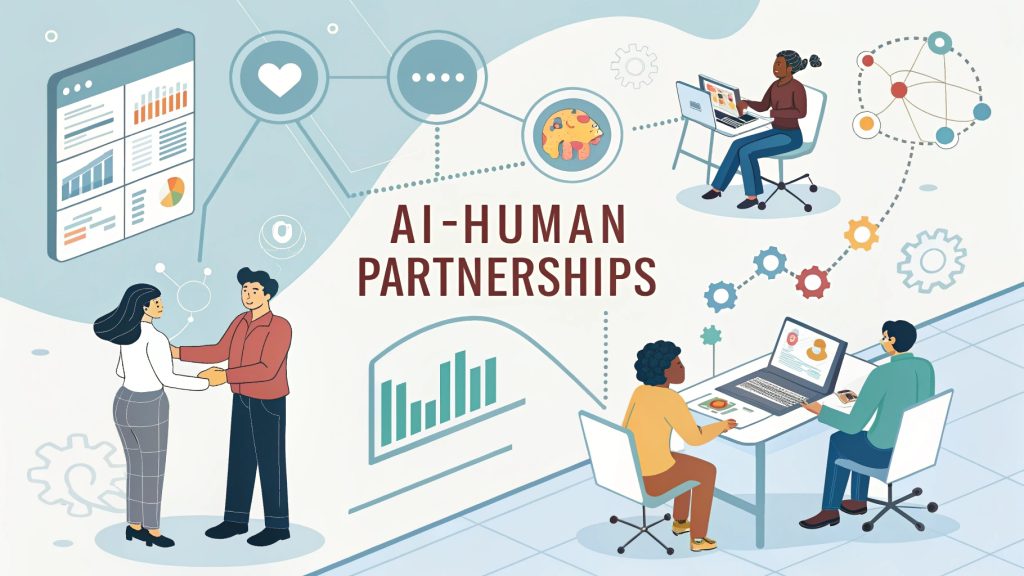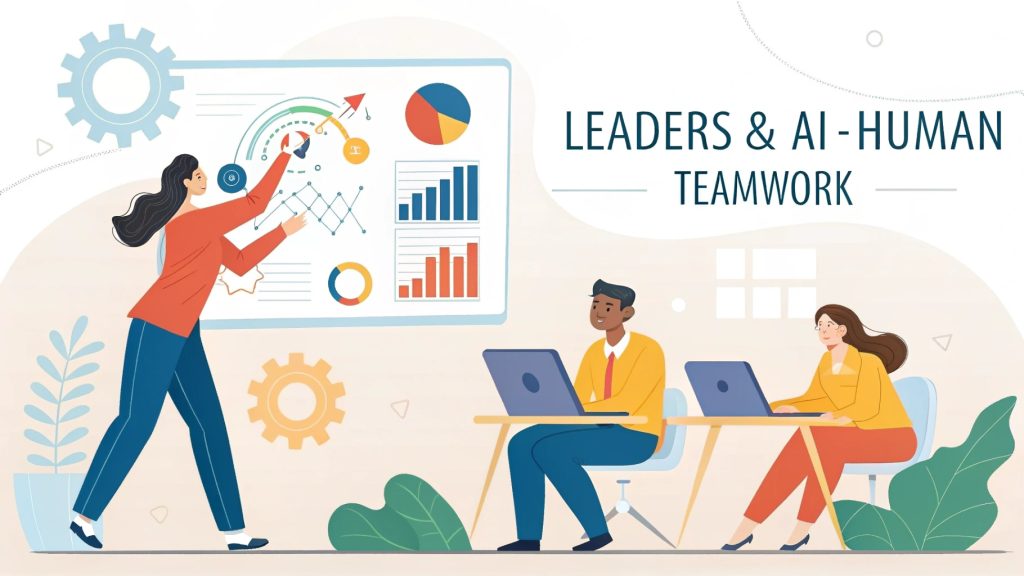
Can machines and people really be teammates? As AI tools pop up everywhere, the secret to workplace success is strong AI-human collaboration. In this post, we’ll explore how this powerful partnership boosts productivity, solves real problems, and transforms teamwork. Want to work smarter, not harder? Keep reading, you’re about to find out how the future of work is already here.
Understanding AI-Human collaboration at work
Did you know that working with AI can make your job easier not harder? AI-human collaboration is becoming the secret ingredient behind smarter, faster teams. In this section, you’ll discover how AI and people join forces to boost productivity in ways you might not expect. Ready to see how this powerful partnership is changing the way we work?
Why AI-Human partnerships are transforming productivity
Have you ever worked on a group project where everyone brought something unique to the table? That’s exactly how AI-human collaboration works. AI can analyze data at lightning speed, while humans bring creativity, empathy, and judgment. Together, they form a team that’s faster, smarter, and more adaptable. This partnership is already changing how companies boost productivity and solve complex problems across industries.
Core benefits of collaborative intelligence
When humans and AI systems work together, each side makes the other stronger. AI handles repetitive tasks like scheduling, sorting, and reporting. This frees up time for people to focus on high-value work like strategic planning or relationship building. As a result, teams are more productive, make better decisions, and get more done with less stress.
“The future isn’t human or AI, it’s humans and AI working together to create smarter outcomes.”
Key challenges in implementing AI-Human collaboration
If AI is so great, why isn’t everyone using it yet? While the partnership between human and AI is full of potential, many teams still face real problems. From fears about job loss to tech that doesn’t fit, this section uncovers what’s holding collaboration back and how to overcome it.
Misconceptions and resistance to AI integration
Many people worry AI will take their jobs or replace human thinking. That fear creates resistance to new tools. But AI isn’t here to steal the spotlight, it’s here to share it. Addressing myths through training and open conversations helps employees feel more confident and supported.
Technical limitations and compatibility issues
Some workplaces use outdated systems that don’t play well with AI tools. That’s like trying to plug a smartphone charger into an old rotary phone. Companies need modern infrastructure for AI to work smoothly. Choosing the right tools and ensuring they integrate easily with existing systems is key.
Lack of collaborative training in the workforce
Imagine being asked to use a robot assistant with no training. Confusing, right? Teams need guidance to work effectively with AI. Training programs should focus on how AI supports tasks, when to rely on it, and how to interpret its suggestions.
Designing an effective AI-Human workflow
Teamwork takes planning even between humans and AI. Want to get the most out of your digital partner? Here, you’ll learn how to design smart, balanced workflows where AI supports human skills and keeps everything running smoothly. Let’s build a system that actually works.
Balancing automation with Human oversight
Automation helps speed things up, but humans still need to steer the ship. Think of AI like cruise control, it’s useful, but you wouldn’t sleep at the wheel. Setting clear boundaries for what AI can and can’t do ensures quality control and safety.
Defining roles in collaborative environments
To avoid confusion, teams must know who does what. Should AI flag important emails or respond to them? Should humans approve every AI suggestion? Clear rules help build trust and make daily work smoother.
Leveraging AI for data-heavy tasks
AI shines when crunching numbers, finding trends, or sorting huge datasets. Let’s say your team wants to analyze customer feedback. AI can scan thousands of reviews in minutes and highlight common issues. Then, humans can brainstorm creative solutions based on that data.
Strategies to increase productivity with AI-Human teamwork
Want better results without more effort? When humans and AI team up the right way, productivity can skyrocket. This section explores simple but powerful strategies to strengthen collaboration, boost efficiency, and build a culture where humans and AI thrive side by side.
Build cross-functional teams around AI initiatives
AI projects shouldn’t be left to the IT department alone. Involve people from marketing, sales, customer support, and other areas. Each team brings unique insights that help shape how AI is used across the organization. Collaboration leads to better adoption and real-world impact.
Encourage open communication and transparency
People need to know what AI is doing and why. If a tool makes decisions behind the scenes, it can feel like a black box. Transparency helps everyone feel included and informed. Leaders should explain how AI works, what data it uses, and how results are interpreted.
Reward experimentation and shared learning
Trying new tools can be scary. That’s why companies should celebrate small wins and encourage curiosity. Did a team member test a new AI writing tool? Share the results. Did someone find a shortcut with automation? Teach others. This culture of learning fuels innovation.
Real-world examples of Human-AI partnerships in action
Think AI-human teamwork is just a theory? Think again. Across industries, real people are already working with AI to solve problems and save time. In this section, you’ll see how collaboration works in retail, healthcare, and more, with examples you can actually relate to.
Case study : Improving customer experiences in retail
In large retail stores, AI-powered chatbots answer basic customer questions around the clock. But when a shopper has a special request or complaint, a human steps in. This combo means customers always get fast help without losing the human touch. Sales go up, and support teams feel less overwhelmed.
Case study : Optimizing project management with AI tools
Project managers often juggle deadlines, budgets, and tasks. AI tools like Notion or Trello suggest task priorities based on past work and team availability. Human managers then review and adjust as needed. The result? Better time use, fewer mistakes, and more successful projects.
Case study : Enhancing medical diagnosis through AI assistance
Doctors now use AI to analyze X-rays and detect issues early. For example, AI can flag patterns that might signal cancer. The doctor then examines the images and makes the final call. This teamwork speeds up diagnosis and can even save lives.
Monitoring and optimizing AI-Human collaboration
What’s the point of using AI if you don’t know it’s helping? To get real results, you need to track, tweak, and improve your AI-human partnerships. This section shows how to measure success, collect feedback, and keep your team on the path to higher productivity.
Tracking performance metrics and feedback loops
You can’t improve what you don’t measure. Teams should track both hard data (like time saved or error rates) and soft data (like user satisfaction). Set regular check-ins to review how AI tools are helping, or not helping, and adjust as needed.
| Metric | Before AI | After AI |
|---|---|---|
| Average response time | 5 hours | 2 hours |
| Error rate in reports | 12% | 4% |
| Employee satisfaction | 68% | 82% |
Adjusting workflows based on real-time insights
AI gives feedback in real time. Use it! If the tool notices a slow task, it might suggest a faster method. Pay attention to these nudges. Combine them with human insights to improve your systems week by week.
Fostering continuous learning and adaptation
The world of AI changes fast. What worked last year might be outdated today. Teams should keep learning through workshops, courses, and real-world practice. Stay curious. When everyone grows, your whole organization becomes more productive.
Looking ahead : The future of AI-Human collaboration at work
The future of work is already here and it’s powered by AI-human collaboration. But what comes next? From smarter tools to long-term strategies, this final section gives a peek into how the partnership between humans and machines will evolve and shape tomorrow’s workplace.
Emerging technologies and their potential impact
Future AI tools will be even more intuitive, personalized, and human-like. Imagine voice assistants that understand your mood or software that adapts to your work style. These tools will make collaboration more natural and less technical.
Building long-term strategies for Human-AI synergy
AI isn’t a short-term fix. It’s a long-term partner. Companies must plan for ongoing updates, training, and ethical reviews. By setting a strong foundation now, teams can grow with AI, not against it, and build a smarter, more efficient future together.
Building a better partnership between humans and AI isn’t just smart, it’s necessary. When used the right way, AI boosts productivity, teamwork, and creativity. Ready to make the most of this collaboration? Share your thoughts, test new tools, and keep learning. Let’s shape the future of work together, one smart step at a time.



